Check out the treasured collections of Rajasthan
Rajasthan is famous for its culture and history. These can be understood through several means, out of which museums are the best. Museums are the storehouses of centuries-old artifacts and articles used by the Kings and Queens in early times. Museums also preserve the weapons used in wars. The most striking thing about visiting museums is that one can get to know a lot about the lifestyle of the royals as well as history. There are various museums situated in different parts of the state, but the ones that one must during the Rajasthan tour are Anokhi Museum in Jaipur, Archaeological Museum in Chittorgarh, Government Museum in Jaisalmer, etc. These museums are the best places to dig deep into the past of the country.
The grandest and biggest museum in Jaipur will leave you spellbound.
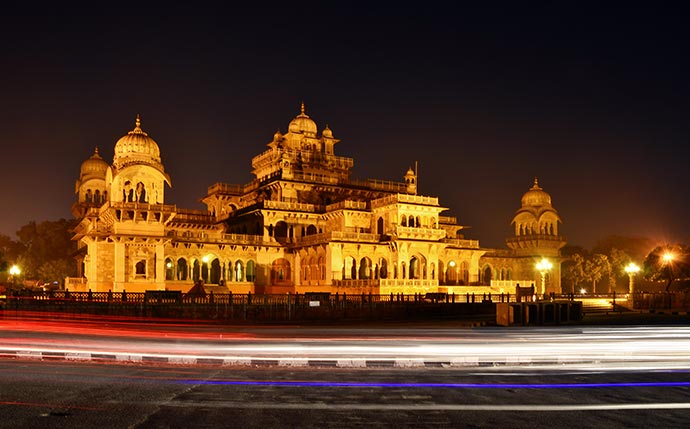
Albert Hall is a museum in Jaipur, Rajasthan. It is located in the middle of the city, so it is not difficult to reach there at all. The Hall is nearly 10-11 kilometres away from the airport which will be 20 to 30 minutes of ride. One can reach there by a cab or the public transport. Buses are also easily available to reach there. If planning on visiting the Albert Hall museum, there are other places too which are nearby to the Hall and can be explored along with the Hall within a single trip. Those will be “The Nehru garden”, “Jaipur Zoo” and “The Bird Zoo of Jaipur”. All these places including the Albert Hall are built in the Ram Niwas Bagh.
The surrounding of the Albert Hall is very peaceful, and you won’t realise that the place is within the city. Once you enter into the Hall you will find yourself in a place which is completely surrounded by artistic things. There is a lot of diverse artefacts to see there. There is a carpet Gallery in the museum which displays unique varieties of carpets most of them are Indian. Those varieties include different shapes, some of them have geometric designs, some have floral designs, some are reproduced from old carpets and some are Mughal designed carpets but most interesting one is the ‘Persian Garden Carpet’ which is said to be the most antient Persian carpet in the world.
There is a part of the museum which is dedicated to metal, the metal room includes the arms and armour collection too. You will see some great metal art in there like metal plates and trays made from gold silver and other metals designed with beautiful enamel work on them. Similarly, decorated water containers, hukkahs, boxes and other fancy royal metal wares. In the arms section you will find knives, swords, daggers, helmets, armours, shields, hilts etc. Each one of them have designs or inscriptions unique from each other carved on them. The interesting one here is the golden ‘Ramayana Shield’ which depicts the story of Ramayana with the carved designs on it.
A part of the museum also includes beautiful artefacts from around the world. It includes art from places like Hungarian, Japan, Greece, Persia, England, Iran, China, Turkey, Nepal, Burma and Egypt. This section also includes an Egyptian Mummy with the coffin. Next is the sculptures section where many stone sculptures are kept on display and some of them are even life sized. They include a stone sculpture of ‘Lord Shiva’ from the 8th century, a buff sand stone sculpture named ‘Yakshi’ from the 4th century and another named ‘Ravananugrah Murti’ form 10th century, a black stone sculpture named ‘Boddhisatva’ from the 8th century, a black stone sculpture from the 10th century ‘Chaturbhurj Vishnu’, another 8th century stone sculpture named ‘Mahisasur Mardini’, a black stone sculpture named ‘Vaman Vishnu’ from 10th century and the last one is ‘Muni Suvrat Nath’ sculpted from Black Stone.
Another colourful section you will encounter is the Indian Pottery, the museum has three rooms for just the pottery section. There are various different types, patterns, designs, colours and shapes all from different parts of India. The types of Pottery in room 1 are Pattan Red and Black ware, Indargah Lacquer ware (Chillum), Bikaner Gold Lacquer, Bengal Carved Pottery. The Pottery Collection Room includes Glazed and Unglazed Pottery, Bengal Bidri Ware, Bahawalpur Kagazi Ware, Paatan Kagazi painted ware, Khurja Bulundshahr Ware, Jalandhar Ware, Burhanpur ware, Hala Sindh Ware, Wonderland Pottery and Ajanta Themed pottery from Bombay (now known as Mumbai). Pottery Collection Room 3 will have Glazed pottery and Pottery from Jaipur school of Arts which will include the Animal figures, Depiction of Palace Architecture, Designed Water Bottles, Mythologically themed and designed pots and some other miscellaneous earthen wares.
Before the standard coins used these days, people used different types of coins which can only be found in museums these days. The Albert Hall museum has a coin Collection at display too. This collection has Silver and Gold coins from Gupta dynasty, Copper coins of Krushna Dynasty, Gold coins from Delhi Sultanate with carvings on them in Arabic Language, silver coins of Sultan Alauddin Khilji, Emperor Akbar’s Gold coins, Mughal coins form Emperor Aurangzeb Alamgir, British India coins of Empress Victoria Indian States Gold coins form 18th century and Coins of East India Company.
Then there is a Textile Gallery which displays different types of Indian designs and Patterns. First there is Tie and dye which is a method of making patterns by colouring the cloth, the fabric is tied at certain places with threads and then put into the dyeing containers. Later when the cloth is taken out dried and the thread is removed, the tied-up part is left undyed making patterns and designs on the fabric.
The museum also displays laces, embroidery and some other traditional Indian outfits mostly antient ones like Pagri (Turbans), Lehenga, choli etc. Some wooden artefacts like sculptures, dolls, antient toys, wooden utensils, antient furniture and wheels are also kept on display in the wood section of the museum. There are many other sections in the museum like the Musical Instruments gallery. This part displays the Indian traditional Musical Instruments. Then there is a clay art section where the clay models are kept for display. Most of the clay models are representing different Poses of Yoga and some other Indian Traditions. There are some Marble arts also in the museum, they include artefacts like sculptures, designed boxes, models and artistic figures all made from marble stone. Along with clay and marble artefacts, the museum has ivory too. The sculptures, models and figures made form ivory are kept at display.
Staying true to its name, this museum houses some really spectacular collections.
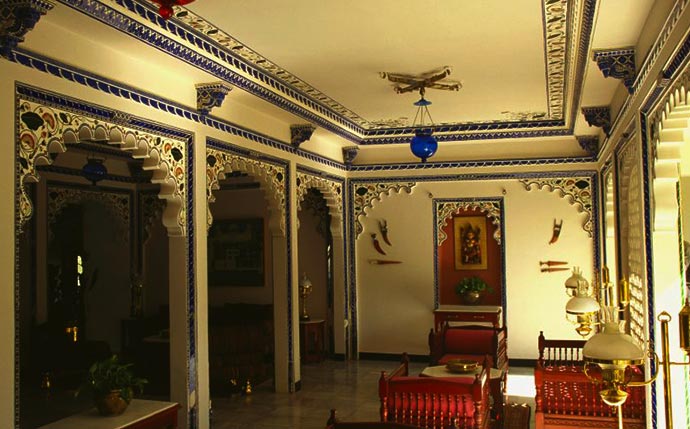
Huddled in the silent Quarters of the Junagarh fort of Rajasthan is the Prachina museum of greatness and royalty of the kings. It is a cultural center along with a museum built under the idea of the daughter of Maharaja Narendra Singh, king of Bikaner, Siddhi kumari in 2000. To protect the undying culture and traditions of the Bikaner in Rajasthan, being one of the values- rich states, this museum was established as a token of remembrance of the state traditions.
The palace of Bikaner emerged to Indo-European lifestyle in the Late 19th centuries. Hence the grand architecture and the décor of the forts are fondly displayed in the Prachina museum of Bikaner. The artistic objects on showcase are the cut-glass chandeliers, oil paintings, typical French furniture, eye striking porcelain vases from countries like China, Belgium origin glass and mirrors. The remarkable change of the life style into the forts of Rajasthan was just fitted to escalate the beauty of the museum display.
Prachina museum also holds the interesting items of daily use of the people, men and women included, to intensify the curiosity about the late generations. Some of the artefacts seen are almost handmade like the embroidered silver and gold thread hand fans, lavish ivory and sandalwood hand fans, gold imprinted perfume bottles, pedicure and manicure hand tools finished with ivory, pearls, buttons and bead handles and lot more.
The Prachina museum is also the center for art and crafts legacy. It showcases the royal family’s paintings, garments and the traditional jewelry of those times. It displays the best of the crockery and cutlery where jewelry boxes, liquor glasses, brass, ivory and lac containers and bowls are some of them.
There is a surprising collection of books on art, culture and history of Bikaner in the museum which is widely available for the tourists and all the visitors, useful at a high end to the research scholars. There are museum café and museum shop to chill out during the visit to the Prachina museum. As said so, the museum is a loaded package of knowledge and curiosity filled excitement which can be included under the list of must visit places when travelled to Rajasthan.
Apart from all these, the museum is a place for the local and the talented artists to showcase their works. It has devoted a separate workspace for the promotion and welfare of the artists not only to exhibit but also sell and work for their active passion. The tourists visiting are hence thoroughly attracted towards the growing culture and incessant talent of the locals. It works to preserve the culture of the surrounding regions to represent and earn for their living.
The culture and tradition of Rajasthan are truly reflected in the historic collections of this amazing museum.
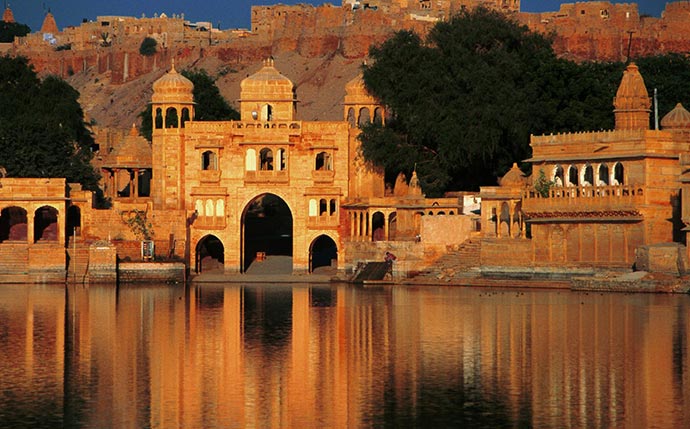
Located in the vicinity of Jaisalmer, Rajasthan, the government museum of Jaisalmer is the result of the founding of Archeology department, to preserve and highlight the multifaceted culture and tradition of the only desert of India, Thar. It was founded in 1984 to give an insight about the biological and geographical nature of the Thar Desert and its heritage. It gives the taste of the early lifestyle of youth with graceful youth of the past culture.
The era of the exhibits goes back to the Lodurva and Kiradu times which dates back to the 12th century. The projecting attractions of the museum include paintings, embroideries, sculptures of stone, the handicrafts, wooden and marine life fossils. The demonstration of the beauty of the museum is such that not only the exterior is such well designed with royalty, the interiors and the contained items bestow gifted art and culture unknown. The museum is known to contain various hand sculpted household material and crockery used in the 12th century.
The rare and large collections of the museum contain maximum vertebrate and invertebrate fossils, the marine cultured sea anemones and various insect and soft bodied worm fossils which existed in the past times. Almost all these fossils are found buried in limestone and sandstone, in some cases shale and are found well preserved in the Government Museum of Jaisalmer.
One other attraction of the museum is the Great Indian Bustard which is the trophy of the State bird of Rajasthan, a trophy to the project initiated on World Environment day. It is a beautiful glass case which shows the mesmerizing beauty of the Indian Bustard. The museum also displays a warplane captured in 1971 war with Pakistan, pride of the nation on its own grounds within the museum premises.
The museum is surrounded by striking silver jewelry and embroidery local markets permitted with gorgeous articles to carry home. The tourists can merely ignore the astounding pull of the museum. With extravagant environment and kingly architecture, it is a must visit place for the people visiting Rajasthan.
The Government museum of Jaisalmer is the highlighting element of the culture of Rajasthan with collections of age-old puppets and handicrafts with embroidery, inscriptions counted 8 and about 65 coins and 13 paintings and hundreds of hand designed garments of the natives. There is an adequate amount of information written to understand and know the particulars of the exhibited items and guides are also available to properly describe nook and corners of the museum helping to understand the importance of the place.
One of the must visit places if history and culture fascinate you.
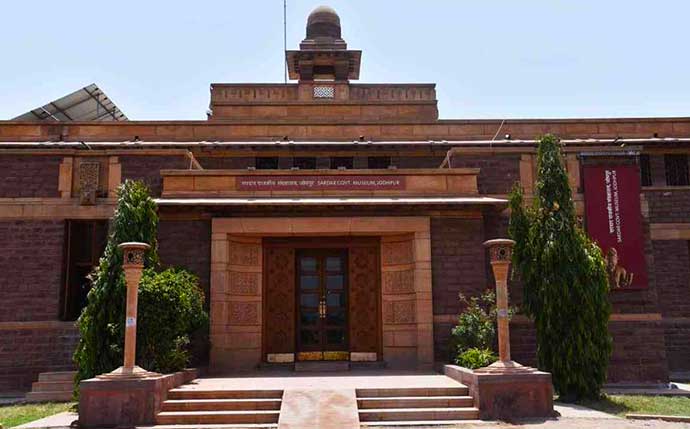
Rajasthan is widely known for its pre-historic and till date its underlying values, principles and beliefs. To preserve and showcase to the upcoming generations were the museums built with ethos-rich evidences. One such museum is the Sardar Government Museum located in Jodhpur.
Situated in the Sun city i.e. Jodhpur, of our country, the Sardar Government Museum is a preserved treasure of arms and books. It is named after the Maharaja Sardar Singh and built under the rule of his son Maharaja Umaid Singh with fair guidance of the architect Henry Vaughan Lanchester and hence stands amidst the Umaid Bagh garden in the city.
This place a treasure house of thousands of objects dated back to centuries as a way of establishing knowledge within the people’s minds about our age-old ancestors and their way of expertise living and war. This place is voted as one of the best places to visit in Jodhpur for the people with keen historic interests. As said the tourists from every corner are attracted to the preserved culture of Rajasthan in Jodhpur. The fascinating museum gives a fair share of enjoyment to all age groups.
The prominent visual treats in the museum are the paintings of the Royalty of Rajasthan and the scriptures, pictures of Jain Tirthankaras (teaching God). The historic artefacts include wooden and brass models of military sections which contain battleships, arms and aircrafts. The galleries in the museum contain miniature textiles and paintings which amuse kids the most. Children are also observed to be charmed by the stuffed animals, birds and weapons of minuscule size and also the local art and crafts of the place. These showcase objects are well-kept behind glass cases and are protected by thorn bushes.
The museum holds a zoo at the premises and also coins, terracotta and inscriptions not to forget thousands of miscellaneous objects of the history. The manuscripts of the Jain teaching gods are in display to convey the enriched Jain culture prevalence.
The facts and figures show that all the archeological, historical, artistic and armory sections of the Sardar Government museum hold a great value to the heritage of state as well as the nation’s tourist fancies. It is a matter of great deal to visit such a well-equipped museum to know the history and the pride of the country. Ranging back to the 6th century antiques, this museum is a must visit for the people with thrill.
One of the must visit places if history and culture fascinate you.
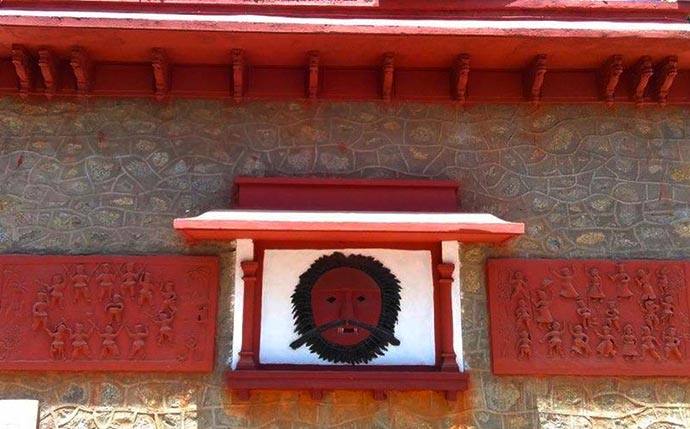
In this historical land of Rajasthan lies one of the museums with a collection of not only ancient arts and arte crafts, but also culture and tradition with magnificent sculptures and godly figures. Being also called Archeological museum, the government museum was built in 1962 this is the just place for sculpture lovers. The beauty of this museum is through the work of the tribes. The astonishing paintings in the area decorate the museum with greater dignity making the people get into high spirits.
The government museum is a small and cozy area which is a must visit place for the tourists who travel all the way to Rajasthan. It is a place of high value to the students being a collection of rare and worthy pieces dated back to ancient history and hence the museum is called the Treasure house of the wealth of the region. The main moto of the Government museum is preserving the wealth and presenting a show of pride of the rich culture and history of the place.
The place consists of rare excavations dating back to 10th century giving the taste of what the state had in the past. The museum is located in the premises of Raj Bhavan. As Mount Abu is a historic hub of culture and activities, this place is a must for the tourists to get awe struck by the mesmerizing art, music, and literature. The bronze cravings and the colored pottery define the state of mind giving splendid feeling.
Apart from the rich history exhibits, there is a display of beautiful music instruments, garments and jewelry, the arms and weapons of the yesteryears. One cannot turn from the magnificent relics and statues dated back between 8 and 13 centuries. There are lord shiv’s, lord Vishnu’s and lord Agni’s along with Jain gurus and apsaras dating back to those centuries with spell bound architecture and a glimpse of the abode.
The Archeological museum is the lies in the vicinity of one of the greatest historical states hence with large value and pride. There is no age group which is not attracted by the scenes of the government museum. The place no doubts attracts the tourists to have a wondrous glimpse of the heritage of Mount Abu.
Witness the amazing collections that depict the heritage of Rajasthan.
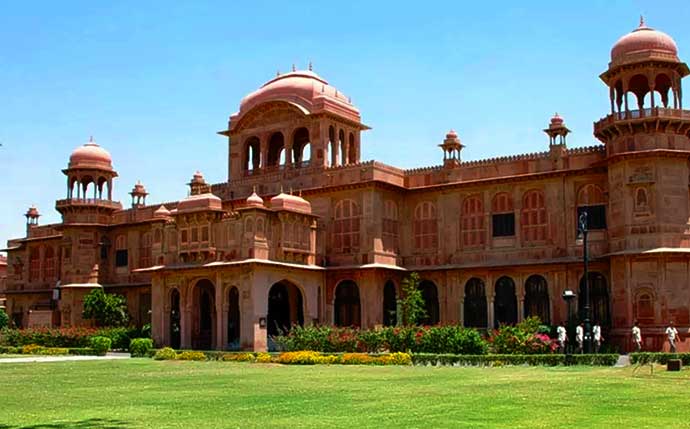
Situated on the second floor of Lalgarh Palace, this museum was time-honoured in 1972. It displays a wide-ranging continuum of Georgian pictures, hunting awards, besides uncommon objet d'art. The museum is out-and-out made for the great rulers of Bikaner and is devoted to the lives of three successive rulers, specifically Maharaja Ganga Sigh, Sadul Singh and Karni Singh. The way of life and times gone by of the above specified three rulers is described with the aid of several objet d'art and life size photographs.
The Sadul Singh museum moreover houses a huge collection of photos and Georgian canvases. This museum caters for a feast to the eyes of history enthusiasts and art admirers. A stopover to this well-known museum offers a foretaste of the times when these maharajas used to rule the metropolis and their regal approach towards living.
Be mesmerized by the amazing traditional art of hand printing in Rajasthan.
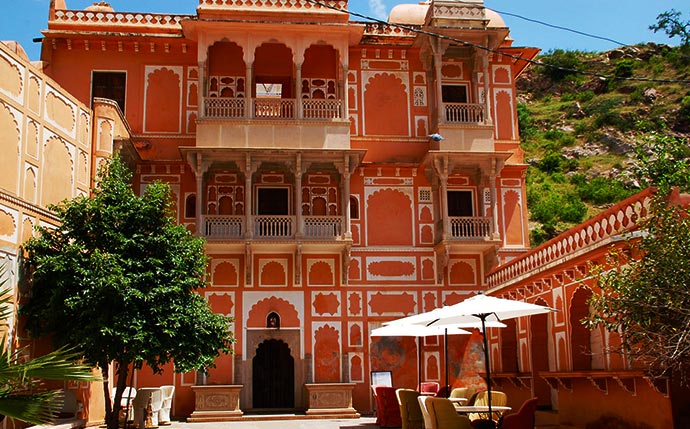
'Chanwar Palkiwalon ki Haveli', and similarly recognised as Anokhi Haveli is located in Jaipur, Rajasthan. Anokhi Museum of hand printing is the footing which is generous and works with a central goal of conserving the outmoded civilisations and the workings of artists of Jaipur.
The museum is the foothold of ancient custom of hand block painting and comprises of the outdated hand printing techniques. The demonstration on block printing techniques are hence offered by this foundation.
Initiated in 2005, the museum consists of a small lecture hall, which runs a slide-show and docu-feature films on Lithography and Tinting, on regular basis.
The AMHP assemblage thus upholds the acquirement programme and carries on developing with recurrent add-ons of hand printed weaves, with the related articles and photos. The widespread ‘Anokhi Archives’, moreover, offers a beautiful storehouse of attire, as well as household fixtures, courting from the initial 1960s till present day. The museum emphases on present-day fabric, stretching from state-of-the-art designs made by gifted artists, to old-style clothes still worn in hand-picked areas today, even though in declining sums. A fixated assortment of notable weaves offers a framework for further acceptation of block printing.
In the premises of the museum, it has a cafe and a shop trading on handmade restricted version of products with jewels, cards, books, furnishings as well as attires.
The Museum is located about 15 km from Jaipur city, and close to Ajmer fort bus-stand. It is well linked through Jaipur Railway station to main metropolises and railway stations like Delhi, Agra, Mumbai, Chennai, Bikaner, Jodhpur, Udaipur, and Ahmedabad.
Watch and be mesmerized by the amazing collection at this historic museum.
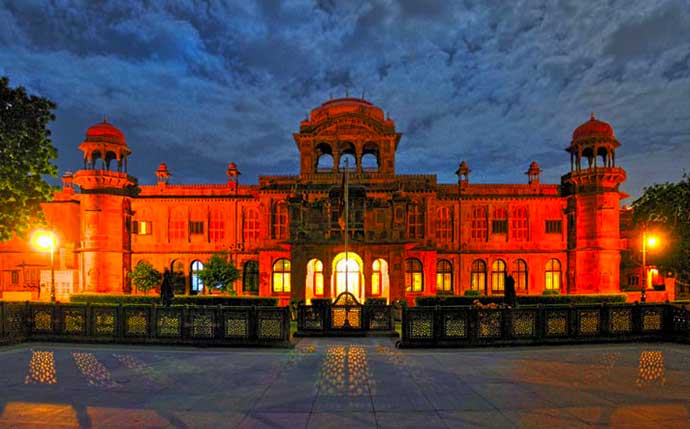
The Bharatpur Government Museum is located in the core of Lohargarh Fort. It is brimming with a number of the most exclusive and ancient artefacts and archaeological assets. Abode of ancient and antiquated mementoes that are of infrequent value. Bharatpur government museum is one amongst the other tourist attractions. Tourists from all nook and corner of the world are bewildered by the antiquated splendour of Bharatpur Government Museum.
Bharatpur Government Museum comprises a very treasurable assemblage of archaeological riches of the neighbouring places. Certain things likewise come from timeworn Bharatpur State. In fact, it is the massive palatial edifice known as ‘Kachahari Kalan’. It is transformed from managerial block of the monarchs of Bharatpur state to a Museum, in 1944 AD. It is situated in the heart of Lohargarh Fort. The ‘Kamra Khas’ (private space) structure on the first floor was added to the museum, later.
Bharatpur Government Museum contains statuaries from the diggings of long-standing hamlets. A number of the long-standing hamlets are Noh, Mallah, Bareh, Bayana and so on, that varies as of the Kushan period (1st century A.D.) to 19th century A.D. Museum, as well has the far-fetched weaponries used in combats in the primitive period of the Jat rulers, portraits, scripts, zoological samplings, native fine art and craft. It hails from Bharatpur.
There is, moreover, an art galleria in the museum which consist of the samples of miniscule images on leaves of the Peepal tree, Mica and old Lithopapers. It likewise has the portraits of the Maharajas of Bharatpur. Moving to higher storey, there consist of two segments. First segment comprises of numerous kinds of guns and small canons, which are used for the duration of 18th century A.D., termed ‘Chaddra’.
Bharatpur Government Museum is well linked by road and rail through Agra, Mathura, Delhi as well as Jaipur. The nearby airport is Agra (54 km). The museum is situated nearly 7 kms from the Bharatpur Railway Station, and 4 km from Bharatpur Bus Stand.
Soak in the fascinating experience of observing the most spectacular dolls collection you have ever seen.
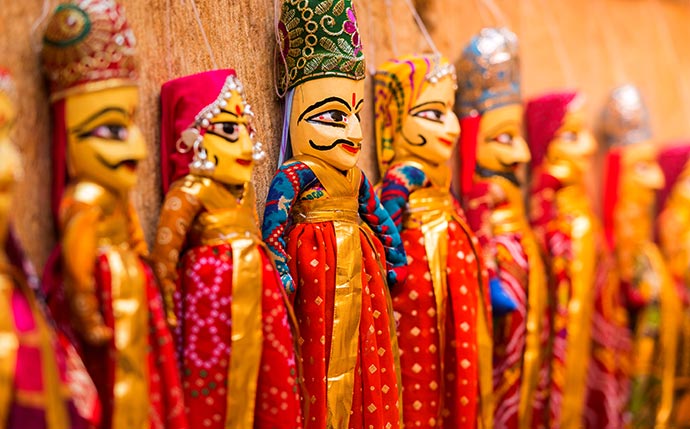
The land of heritage and culture, Jaipur is surrounded by museums all over the city. By visiting museums around the city is the best way to enjoy the city. The museums over here expresses the royal lifestyles, tales of combat, ethical snippets. There is also one amongst the others which attracts children’s attention – The Doll’s Museum. It is the most visited tourist destination.
This museum was constructed in the 20th century in order to express the world’s relation with the various kinds of doll, the attires, and adornments and so on. One can discover several dolls that express the country’s notions along with various attires, from different parts of India. There are likewise dolls that display the outmoded dance practises, similar to ‘Kathakali’, ‘Odissi’, ‘Bharatnatyam’, ‘Kuchipudi’ and more.
In similar tones, one can also witness dolls from various corners of the world. There is new colonnade having dolls of children’s favourite heroes, comic strip characters. Moreover, the ‘English Puppet Gallery’ is likewise newly presented. Dolls of various heights, from two inches and more, highlights the galleries of the museum.
The museum is situated just 4 km (approx.) from the city. The public buses can be availed from any corner of the metropolis. Either from Ram Niwas Bagh bus stop or Jawahar Nehru Marg bus stop, it is a walkable distance. One can also book a cab or hail an auto, from several parts of the metropolis.
Being an indoor facility, the museum, has no problem with the seasons. The beauty of the museum is at its prime, all round the year. If one wishes to visit Jaipur, then winter is the best time to do so.
Be a part of the rich history of Rajasthan at this fascinating museum
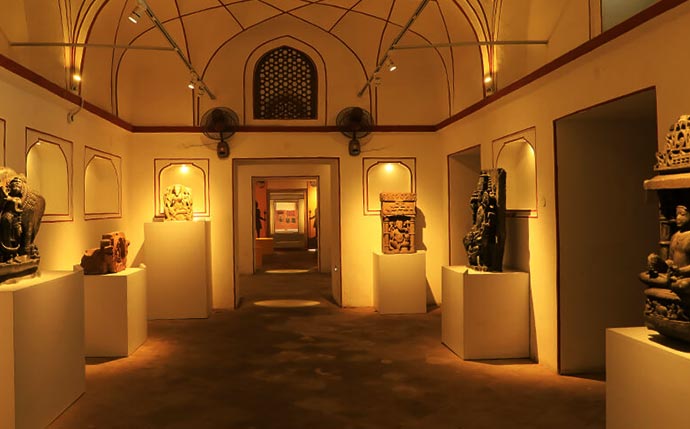
Ajmer Government Museum converted Akbar’s Royal palace into museum. It was built in 1570 by Mughal emperor Akbar and is situated in the heart of the city. Ajmer is an abode full of traveller’s fascinations. The huge range of touring destinations in Ajmer makes it a place that is at least worth a visit. Conversing of travellers’ fascinations in Ajmer, the leading places of curiosity are the Museums in Ajmer.
By the advantage of the very rich and intricate history of Rajasthan, going back to the seventh century, the Museums in Ajmer displays the rarest of sporadic assemblages like weaponries and armour, used in feudal times, stone statuaries, and miniscule portraits.
Owing to the supremacy of socially varied monarchs, primarily in the form of the Rajput, and then and there in the form of the Delhi Sultanate and lastly the Mughals, the Museums in Ajmer display an extensive range of vintage shards of items that have been the focus of widespread investigation and archaeological site. One inspecting all the exhibits, one grows an inkling of the creative intelligence controlled by the numerous artists and craftsmen of those ages. The eternal charisma of the fine art and craft, which has significance till date, likewise captivates one.
Witness the bravery and valour of Indian army on display at the Jaisalmer War Museum.
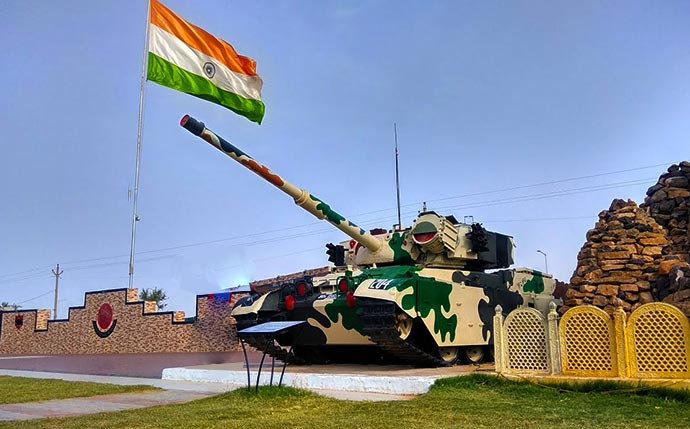
This is one amongst the few tourist places intricately set up by the Indian Army. It is almost 10 kms away from the main city, located inside a Military Station. The museum was constructed commemorating the gallantry acts and martyrdom embraced by the Indian Armed forces, during Longewala Battle (1971) and Indo-Pak War (1965). The museum is hemmed in by widespread earthy lands, along with dust packed shrubberies, thus generating an environment that matches a war base-camp.
In the museum compound, a huge assemblage of war shields, medals, trophies and a number of other army weapons can be seen. There is present 106mm recoilless gun, one of the main anti-tank weapon, used during the Indo-Pak war. The museum has a couple of info-display halls, known as, ‘Longewala Hall’ and ‘Indian Army Hall’, along with a cinematographic room featuring movies in relation to the battles fought.
A conversation is shown, between Major Kuldip Singh Chandpuri and the Maha Vir Chakra recipient, since he played a crucial role, all through the battles of Longewala. Moreover, the museum displays the murals of the Indian Soldiers, who sacrificed their life to save the Mother Country. Moreover, the Indian Air Force likewise donated a Hunter Aircraft, which was used for the duration of the 1971 Indo-Pak War, and that can be seen in the museum patio.
Vintage equipment like guns in the museum, are on full display. But the visitors get attracted to the outdoors. One can have a very close-look at the T-59 battle tank, that was contrived by the Chinese and used by Pakistan’s army in 1971 Longewala Battle, a Soviet T-59 Tank. Armed forces in 1971 Longewala Battle, a kind of the Soviet T-59 A tank. Also, an M4Sherman T tank, which was used by the United States, throughout the World War II. And this powerful device was thus used by Pakistani troops to counter attack India.
The compound furthermore has a battle-truck termed P-15 Radar, this equipment was used by the Indian Army for the period of one of the wars and is said to have a range of 150 kilometres and can quest its aim up to 3 kilometres altitude. A different heavyweight machine identified for its dependable 105MM main gun placed permanently, and that is ‘Vijayanta’ Battle tank.
It is one of the must visit places, if you are interested in war history.
Be mesmerized with one of the finest displays of art and culture of Rajasthan.
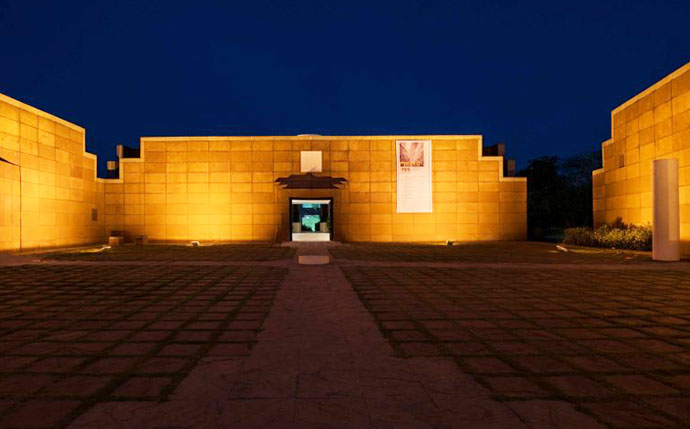
An arts and crafts centre, Jawahar Kala Kendra is located in the city of Jaipur. The art and craft centre is closely associated with Jaipur and the classifications. In the year 1986, the centre was built and in 1991, the construction got completed. The state government launched the centre to cater the space to display the rich craft heritage, as well as the cultural and spiritual values of India. The centre was founded in the name of Shri Jawahar Lal Nehru.
The ideas related to the architecture of the centre got created in Correa’s mind. It being in close vicinity to the University, aids to the cultural development of the students. However, it was not till 1986 that the notion for the edifice was confirmed.
Correa's idea for the Kendra raises straight the unique ‘Navagraha’ or nine house ‘rnandala’. The idea of Jaipur city is grounded on the nine squares. The centre is made with eight blocks- housing, which is an arts centre, playhouses, public library, art exhibition room, canteen, hostel and studio. Artists and arts loving people frequently occupy, along with numerous displays and recitals by local artistes being shown in the centre.
The yearly festivals of traditional dance and music takes place in the centre. Workshops of dance and music are catered by the centre. The place has the artist’s domain effect, with all the light, shadow and colour-effects.